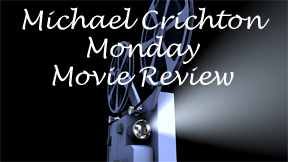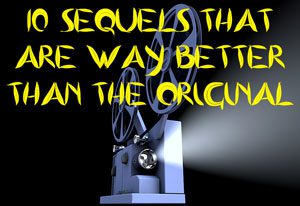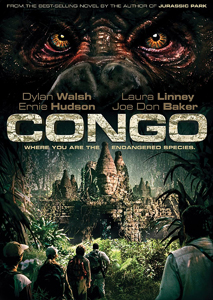After “Jurassic Park” (1993), Hollywood wanted to get back into the Michael Crichton business. The first big-budget sci-fi title after that, the long in-development “Congo” (1995), suffered from being not as good as “Jurassic Park.” The parallels of jungle settings and mysterious killer creatures didn’t help.
A throwback jungle trek
Despite the film’s bad reputation, director Frank Marshall assembles a rollicking B-movie adventure in the old-school fashion of “King’s Solomon’s Mines” – also an influence on Crichton’s 1980 novel. The movie is “Indiana Jones” Lite, with four main adventurers.
They meet up in the slow but steadily building first half, working their way through diplomatic situations in unstable central Africa until parachuting into the dangerous volcanic Virunga region.

“Congo” (1995)
Director: Frank Marshall
Writers: John Patrick Shanley (screenplay), Michael Crichton (novel)
Stars: Laura Linney, Tim Curry, Dylan Walsh
Laura Linney’s Dr. Karen Ross aims to learn the fate of her ex-fiancé, with whom her tech company lost satellite contact. Dylan Walsh’s Dr. Peter Elliot aims to return gorilla Amy to her native home.
(I find Amy to be well-designed by Stan Winston, and well-performed by the puppeteers. It’s evident she’s not a real gorilla, but not to the point of distraction.)
Tim Curry’s Russian-accented Herkermer Homolka (unique to the film version) aims to find the Lost City of Zinj, believing Amy’s finger paintings point the way. And Ernie Hudson’s Capt. Monroe Kelly hopes to see everyone safely through the jungles. Though not top-billed, “Ghostbusters’ ” Hudson is the confident presence at “Congo’s” core.
This is a PG-13 version of Crichton’s novel, but writer John Patrick Shanley is broadly faithful to it and finds room for suspense, scares, violence and action.
Gorilla filmmaking
Shanley drops the ball in adapting Crichton’s writings about how a gorilla raised by humans is stuck between two worlds. In the film, it’s a given that it’s perfectly fine for Amy to return to jungle life.
Oddly, Peter doesn’t seem to realize this is the inevitable endgame; more emotion could’ve been wrung out of this thread. But Walsh deserves credit for his part in bringing Amy to life by so naturally acting across from her. There would’ve been more of an “uncanny valley” aspect to Amy without Walsh’s work.
Karen’s diamond laser-gun might be a step into gee-wiz SF territory, but I went with it. And one clever scene finds Karen and Monroe eliminating heat-seeking missiles by shooting flares out of their plane’s doorway.
More problematic on the technology front is Amy’s sign language being translated into a computer voice. Granted, this is something Crichton himself might’ve done in one of his cheesier SF films.

But it’s not necessary, and it jars us out of the story. It’d be better if Peter and Amy used American Sign Language with each other, and the other trekkers picked up a few signs, like in the novel.
This would require a viewer to read subtitles. I think in 1995 filmmakers thought viewers don’t want to do that, so the computer voice is the workaround.
Familiar faces
“Congo” has a bizarrely deep cast that lifts us through the slow parts till we get to the strong final act featuring those gray gorillas and a believable volcanic eruption.
Joe Pantoliano plays a very Joey Pants version of a guy who gets things done in Africa, and Delroy Lindo chews scenery as a minor warlord the adventurers must bribe. For some bizarre reason, both are uncredited.
Bruce Campbell plays the lost adventurer, Charles Travis, who we meet in the prolog. The capper to his arc is disappointing, considering he’s a familiar actor. And it’s weird that he has no scenes with Linney if their characters have a backstory.
Coming off worst, by far, is Joe Don Baker as Karen’s boss and Charles’ father. He cares more about diamonds than his son. That’s not an inappropriate trait for a corporate tycoon, but it is presented in absurdly blunt fashion.
Certainly, some of “Congo” is corny, and obviously the book is better. When it comes to Crichton adaptations, you can of course do better, but you can also do worse.

